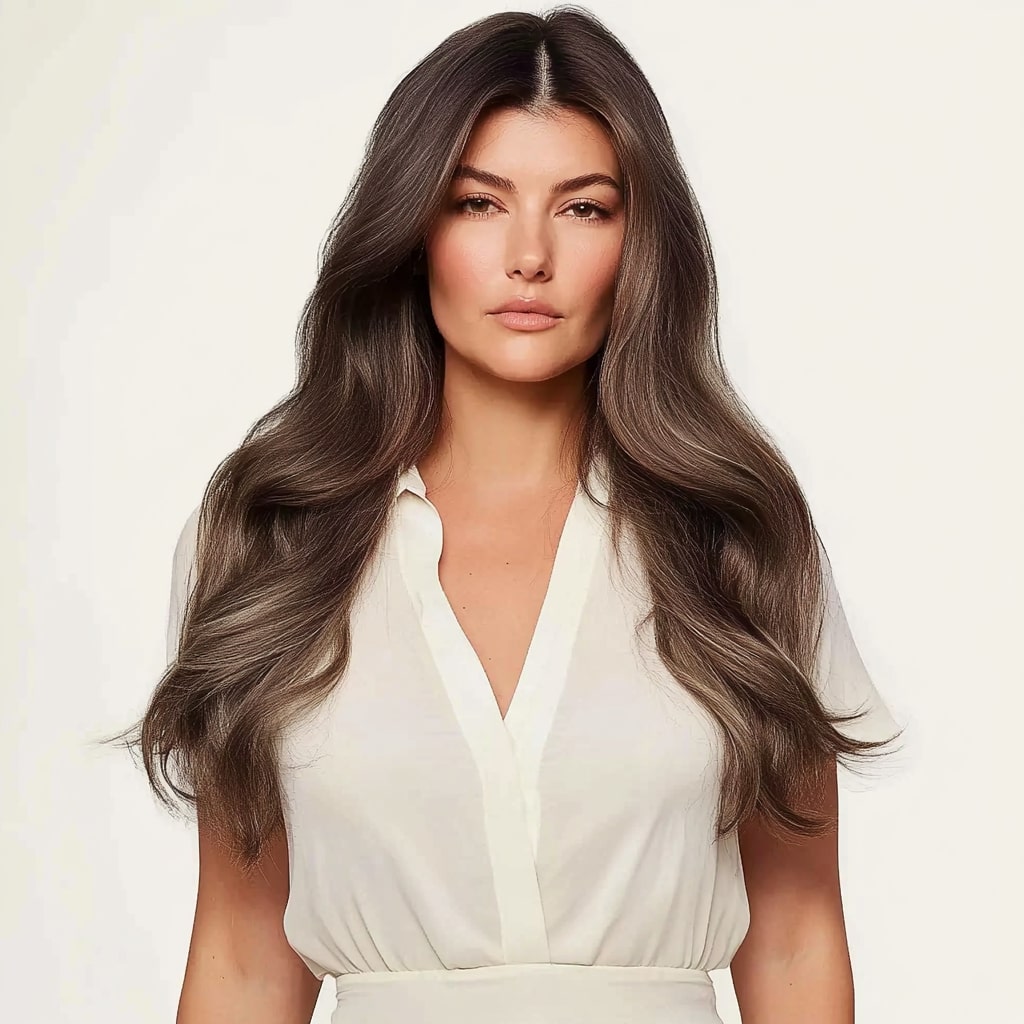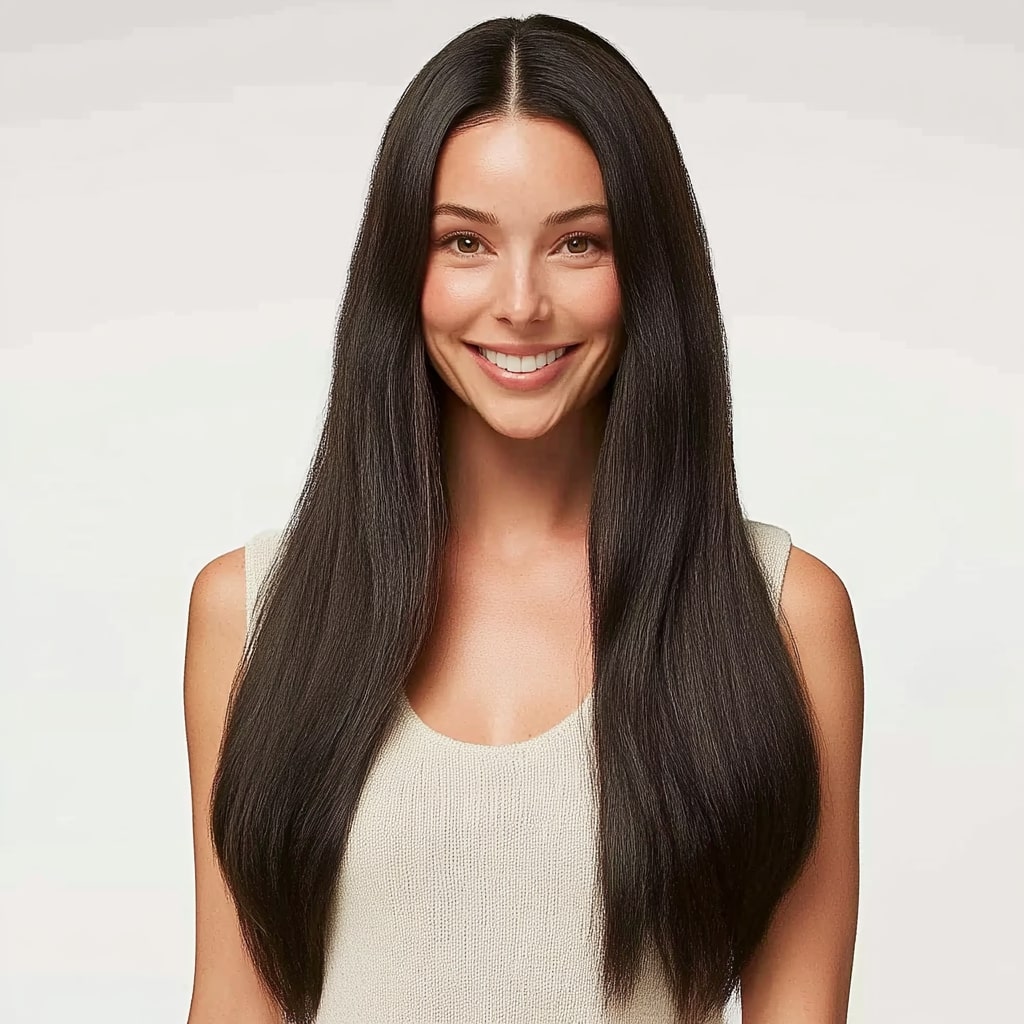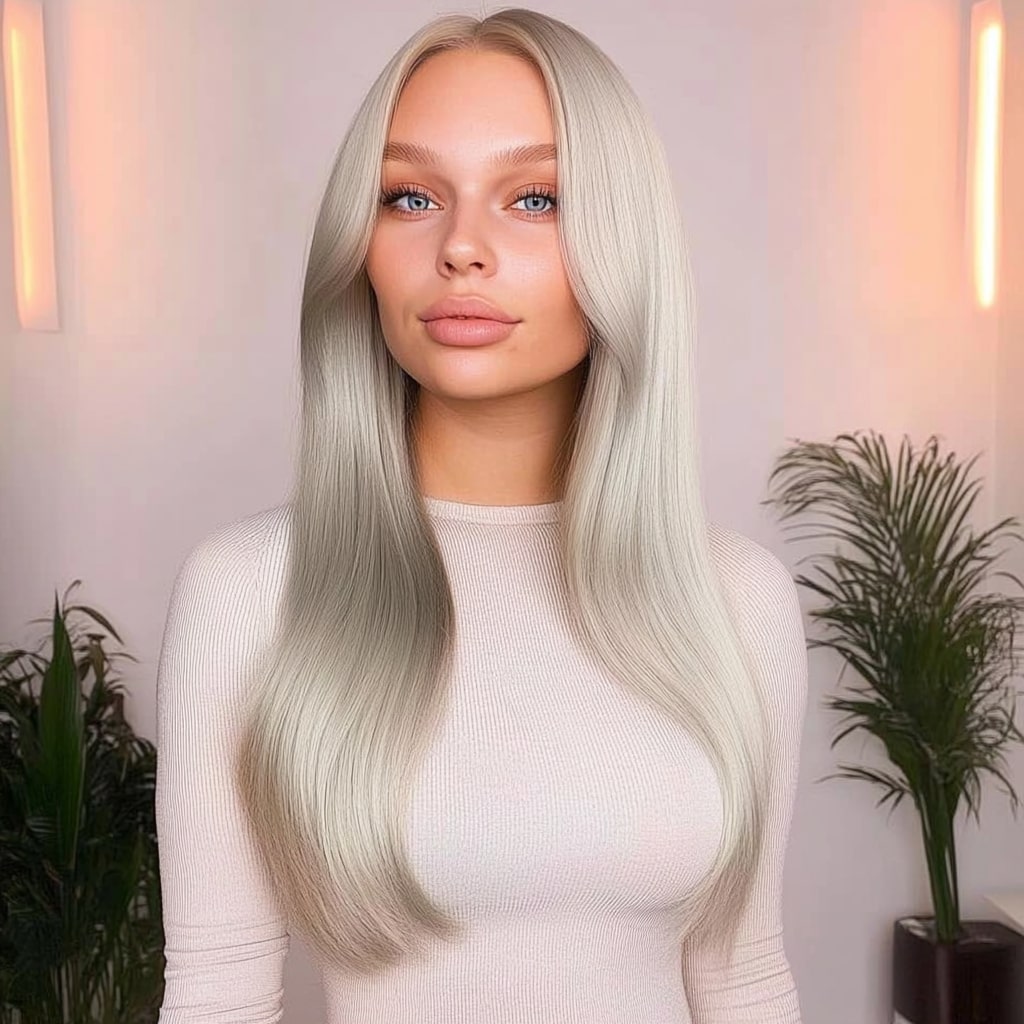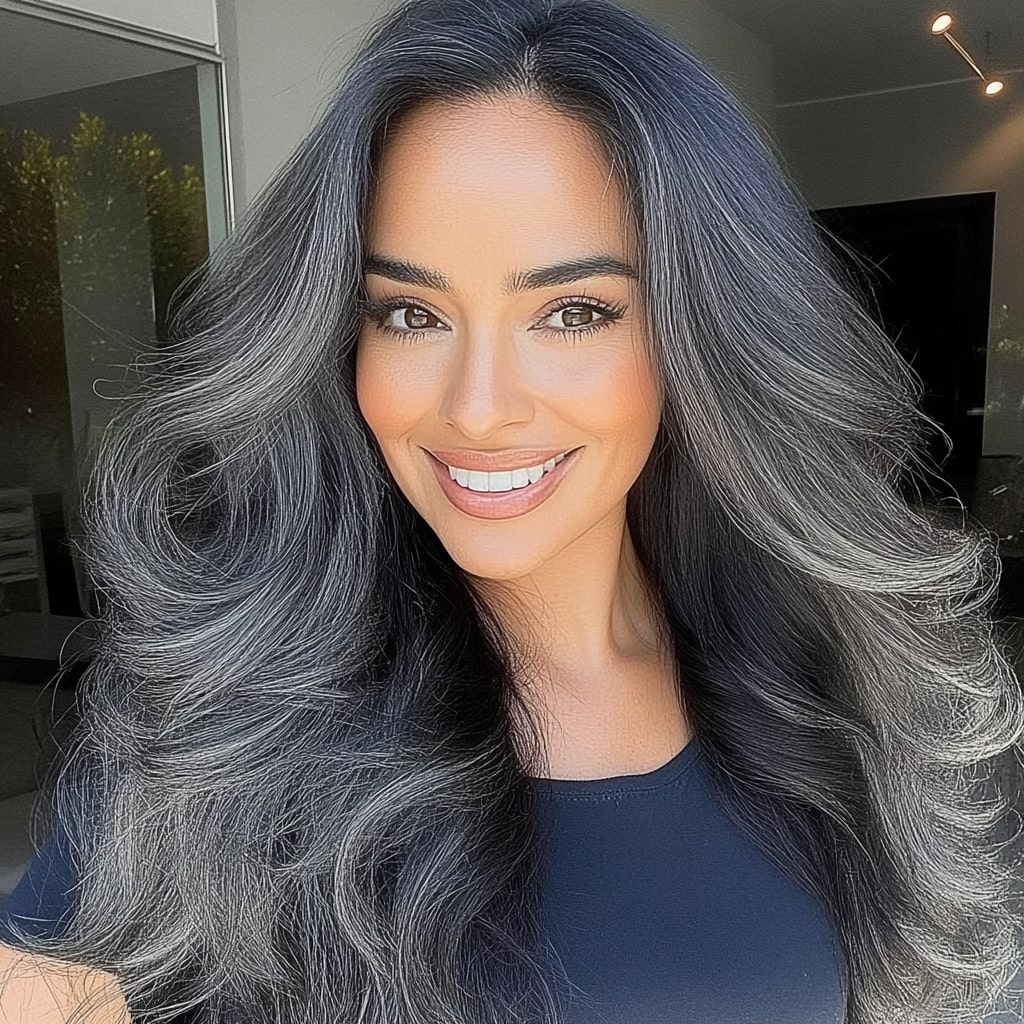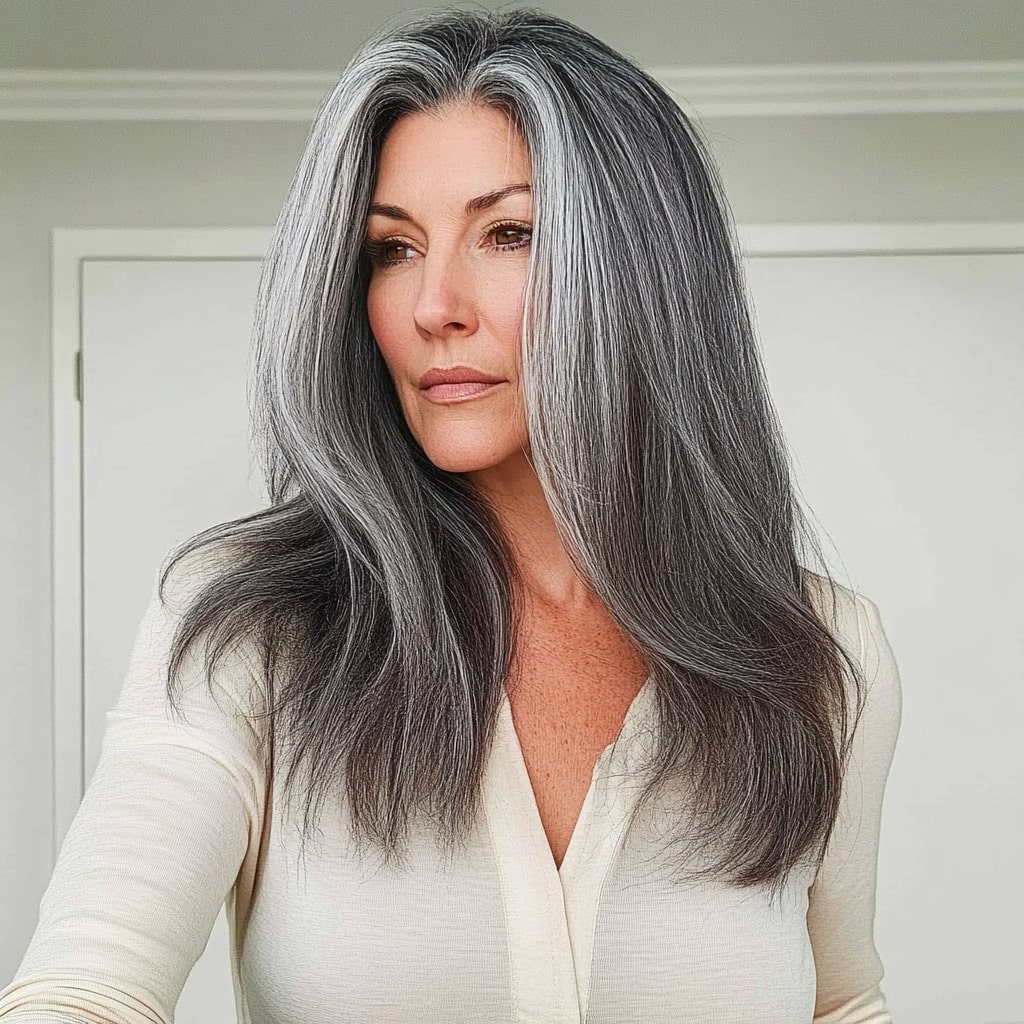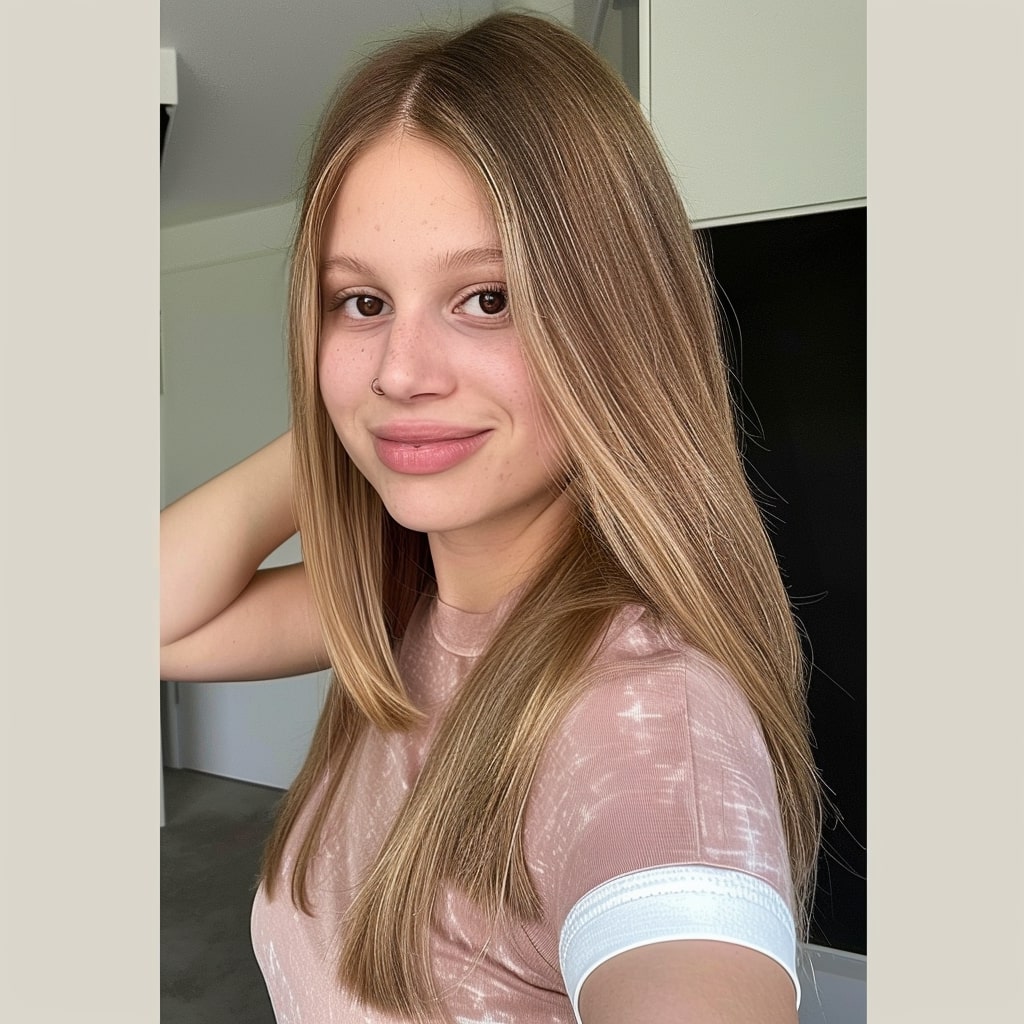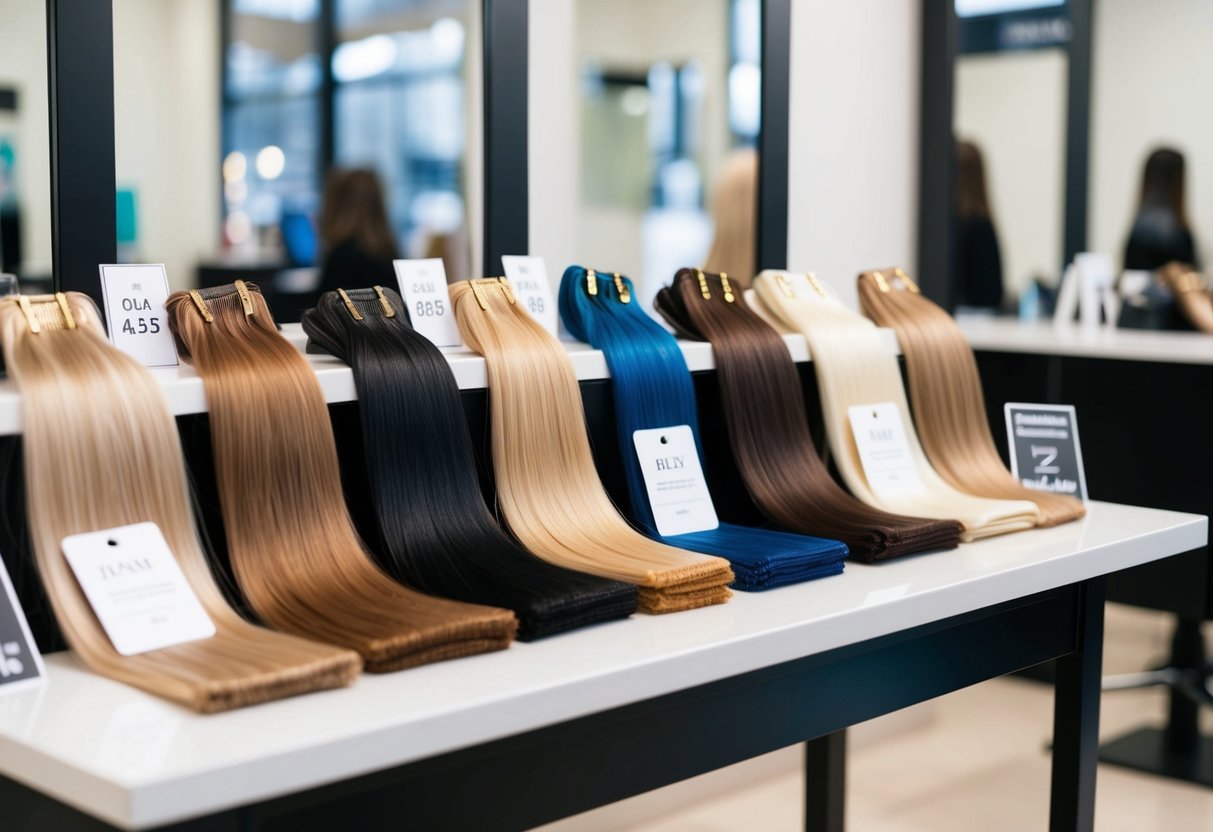Reviving Parched Locks: Causes and Remedies for Dry Hair Extensions
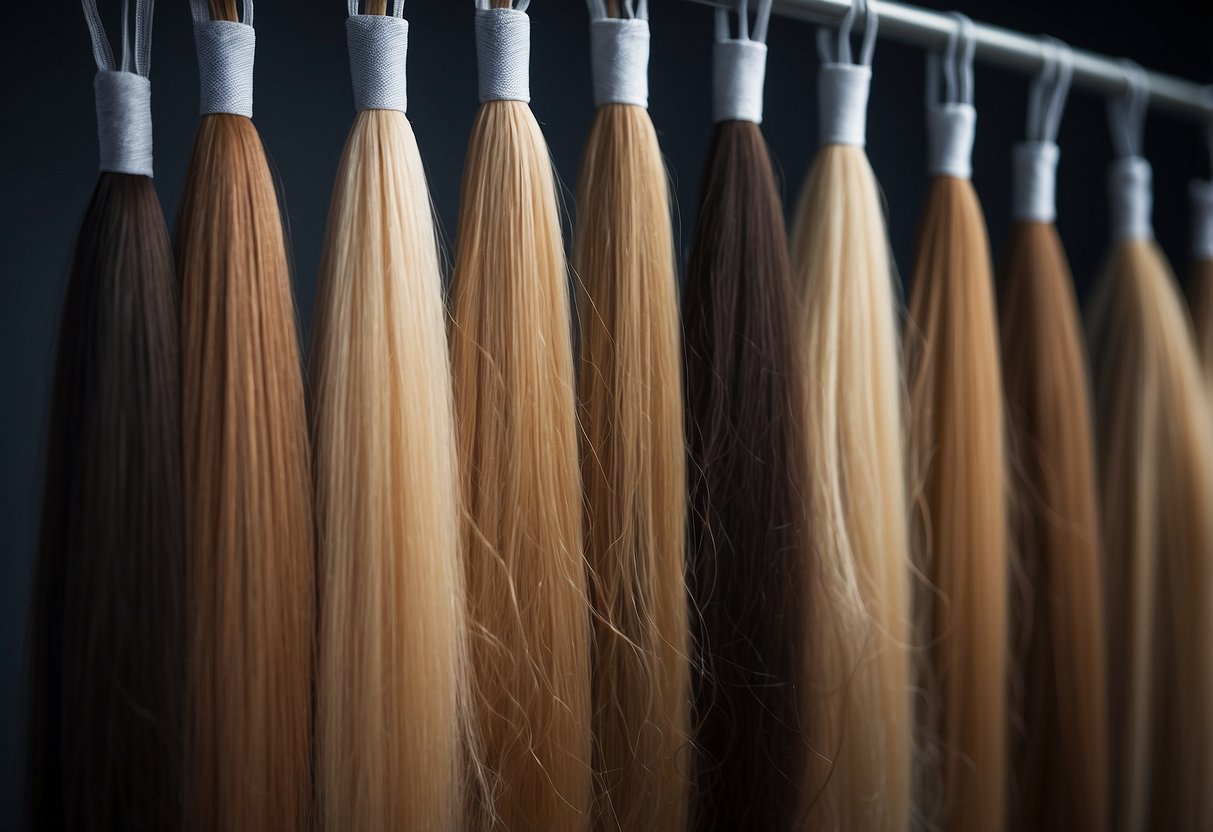
Moreover, how you care for your hair extensions plays a significant role in their condition. Using the wrong products, excessive heat styling, and physical wear and tear can all contribute to their dried-out state. It's crucial to adopt a dedicated routine that includes gentle handling, proper washing, and the use of moisturizing products specifically designed for hair extensions to maintain their luster.
Environmental factors such as sun exposure, humidity, and even pollution can also affect your hair extensions. External influences can strip away moisture, making your extensions look lackluster. Implementing protective measures such as wearing hats or using UV-protectant sprays can help shield your extensions from harsh conditions.
Key Takeaways
- Hair extensions do not receive natural oils from the scalp, causing dryness.
- Proper care routines and products are essential for maintaining moisture.
- Environmental factors can strip moisture from hair extensions.
Understanding Hair Extensions and Dryness
Hair extensions can significantly enhance your look, but they require proper care to maintain their beauty. Dryness is a common issue, affecting both human hair and synthetic extensions. Understanding the nature and factors leading to dryness can help in managing and preventing this problem.
The Nature of Hair Extensions
Hair extensions come in two main types: human hair extensions and synthetic hair extensions. Human hair extensions are made from real human hair, offering a natural look and feel. These extensions can be styled and treated like your natural hair. They, however, require the same level of care to keep them in good condition.
Synthetic hair extensions, on the other hand, are made from man-made fibers. These extensions are usually more affordable and pre-styled. However, they are more prone to dryness and damage from heat and chemicals. Knowing the type of extensions you have can help determine the best care practices.
Factors Contributing to Dryness
Several factors contribute to the dryness of hair extensions. One primary reason is the lack of natural oils. Unlike natural hair, extensions are not attached to the scalp and do not benefit from sebum, the natural oil produced by the scalp. This absence of natural oils can lead to dryness over time.
Another factor is the quality of the hair. Low-quality human or synthetic hair extensions are more likely to become dry and frizzy. Additionally, excessive styling, use of harsh products, and exposure to environmental elements such as sun and wind can further exacerbate dryness. Regular maintenance and appropriate care products are essential to keep your hair extensions moisturized and healthy.
Routine and Maintenance
A consistent hair care routine is essential for maintaining healthy and vibrant hair extensions. This includes proper washing, conditioning, styling, detangling, and deep conditioning treatments to keep your extensions looking their best.
Proper Washing and Conditioning
Washing your hair extensions correctly is crucial. Use a sulfate-free shampoo to avoid stripping the hair of necessary moisture. Wet the extensions gently and apply the shampoo from the roots to the ends, followed by a thorough rinse.
Next, use a moisturizing conditioner. Apply the conditioner evenly through the extensions, avoiding the roots to prevent slipping of bonds or tapes. Leave it on for a few minutes to let it penetrate the hair. Finally, rinse thoroughly with cool water to seal the hair cuticles and enhance shine.
Recommended Styling Methods
To avoid damage, use heat styling tools sparingly. When necessary, always apply a heat protectant spray. This minimizes the risk of heat damage and maintains the health of your extensions.
Air-drying is preferred. If you must blow dry, use a cool setting and a wide-tooth comb to detangle as you dry. Avoid high heat from flat irons and curling wands. If styling tools are required, opt for low-heat settings and limit usage to reduce stress on the hair.
Regular Detangling Practices
Regular detangling helps keep hair extensions smooth and free of tangles. Use a wide-tooth comb or a special detangling brush designed for extensions. Begin detangling at the ends and work your way up to the roots.
Incorporate detangling into your daily routine, especially before washing and bedtime. Tying the hair in a loose ponytail or braid at night will minimize tangling during sleep. Additionally, sleeping on a satin or silk pillowcase can reduce friction and keep your hair extensions sleek.
Deep Conditioning and Moisturizing Treatments
Regular deep conditioning treatments are essential. Once a week, apply a deep conditioner or hair mask that specifically targets moisture replenishment. Work the product through the hair, then cover with a shower cap to trap heat for better absorption. Leave it on for at least 20 minutes before rinsing thoroughly.
For extra moisture, consider using leave-in conditioners or serums. These products provide continual hydration and prevent dryness. Use these treatments sparingly to avoid overloading the hair, maintaining the balance between moisture and healthy hair extension longevity.
Preventing Damage to Hair Extensions
Preventing damage to hair extensions involves avoiding heat and environmental stressors, protecting against chemical harm, and using the appropriate hair care products.
Avoiding Heat and Environmental Stressors
Heat from styling tools can cause significant damage and dryness to your hair extensions. Minimize heat styling by opting for air-drying. When using tools like curling irons or flat irons, always apply a heat protectant spray. Excessive sun exposure can be equally harmful. Wear a hat or use a UV protectant spray when spending extended periods outdoors.
Wind and pollution can also contribute to tangling and dryness. Protect your hair extensions by tying them in a loose braid or bun during windy conditions and cleansing them regularly to remove pollutants.
Safeguarding Against Chemical Harm
Chemicals from hair care products and treatments can weaken and damage hair extensions. Avoid products containing sulfates, as these can strip away moisture, leading to dryness and breakage. When considering chemical treatments like coloring or perming, use products specifically formulated for hair extensions to minimize damage.
Hydration is key, so schedule regular deep conditioning treatments and use leave-in conditioners to maintain moisture levels. Always follow the instructions on chemical product labels and consider consulting a professional stylist for advice on safe treatments.
Selecting the Right Hair Care Products
Choosing high-quality products is crucial for the maintenance of your hair extensions. Use sulfate-free shampoos and conditioners to avoid stripping the hair of essential moisture. Look for products rich in natural oils like argan, coconut, or olive oil to help retain moisture and reduce frizz.
Regular use of leave-in conditioners can provide ongoing hydration and protection. Avoid products with heavy silicones, as these can build up and weigh down your extensions. Opt for lightweight, nourishing formulas that strengthen and protect against damage.
By selecting the right products and following a diligent care routine, you can significantly extend the life and beauty of your hair extensions.
Reviving Dry Hair Extensions
Dry hair extensions can be a common issue, but there are effective ways to restore their softness and smoothness. You can either use home remedies and natural oils or opt for professional treatments at a hair salon.
Home Remedies and Natural Oils
Using natural oils and home remedies is a great way to revive dry hair extensions. Coconut oil, argan oil, and olive oil are particularly effective. These oils are rich in nutrients that help repair and soften the extensions.
Start by heating a small amount of oil slightly to make it warm. Apply the warm oil to your hair extensions, ensuring even distribution using your fingers or a comb. Leave the oil on for about 30 minutes before rinsing with a sulfate-free shampoo and conditioner.
A deep conditioning treatment with a mixture including honey and vitamin E can also work wonders. Combine equal parts of honey and vitamin E oil, apply to the hair extensions, and let it sit for 20 minutes. Wash thoroughly afterward.
Another method is the boiling treatment. Boil a small pot of water, and add a few drops of your preferred oil and a couple of spoons of hair conditioner. Submerge the extensions for about 10 minutes, then remove and allow them to dry.
Professional Hair Salon Treatments
Professional treatments at a hair salon offer another way to rejuvenate dry hair extensions. Salons have access to specialized products and techniques that ensure deeper treatment.
Hot oil treatments are commonly used. These treatments involve heating oils like coconut, olive, or argan oil and applying them to the hair extensions. The heat allows the oil to penetrate the hair shaft deeply, providing intense moisture and repair.
Salons also offer deep conditioning treatments that use professional-grade masks and conditioners. These treatments provide nutrients that help repair damaged hair extensions and make them softer.
Additionally, a salon may use specialized products that contain keratin and other proteins that help strengthen and revitalize hair extensions. The expertise of a salon professional can make a significant difference in the results.
Choosing between home remedies and salon treatments depends on your preferences and needs. Both approaches can effectively revive and repair dry, damaged hair extensions.
Understanding Different Types of Hair Extensions

Different types of hair extensions can significantly impact their appearance and maintenance needs. Knowing the differences between human hair and synthetic extensions, and identifying quality in hair brands, can help you make better choices.
Comparing Human Hair and Synthetic Extensions
Human hair extensions offer a natural look because they blend seamlessly with your own hair. They can be styled, dyed, or treated just like your natural hair. Remy hair extensions, which are 100% human hair, are especially prized because their cuticles are kept intact, reducing tangling and increasing longevity.
Synthetic hair extensions, on the other hand, are made from fibers that mimic the appearance of human hair. They are typically less expensive but don't last as long. Synthetic hair is also more prone to getting frizzy and cannot be exposed to high heat, which limits styling options.
Human hair extensions, especially Remy, tend to be higher quality and more versatile, but synthetic extensions can be a cost-effective option for short-term use or special occasions.
Identifying Quality in Hair Extensions
When selecting hair extensions, consider factors like strand alignment, cuticle integrity, and the sourcing of the hair. High-quality hair extensions have all hair strands aligned in the same direction, preserving the natural texture and preventing tangles. Remy hair, in particular, is recognized for maintaining cuticle integrity.
Look for extensions labeled as 100% human hair to ensure you are getting genuine hair, which provides a natural appearance and flexibility in styling. Avoid products that mix synthetic fibers with human hair, as this compromises quality.
Price can also be an indicator of quality, although higher cost does not always guarantee better extensions. Research brands, read reviews, and consult with hair care professionals to make informed choices.
Managing External Influences on Extensions

Maintaining the health of your hair extensions requires managing external factors like UV rays, pollution, climate, and stress. Proper care and protective measures are crucial for keeping your extensions in top condition.
Protection from UV Rays and Pollution
UV rays and pollution are major threats to hair extensions. Prolonged sun exposure can break down the hair shaft, causing dryness and brittleness. Use a UV protection spray on your extensions, especially if you spend time outdoors. This simple step helps shield the hair from the sun's harmful rays.
Pollution, like dust and smoke, can cling to your extensions, leading to build-up and frizz. Regular cleansing is essential to remove pollutants. Opt for a gentle, sulfate-free shampoo aimed at protecting the hair shaft while avoiding harsh chemicals. Consider wearing hats or scarves when in heavily polluted areas to minimize exposure.
Mitigating Effects of Climate and Stress
Climate changes, such as humidity or dry weather, can adversely affect your extensions. High humidity levels might cause frizz, while dry climates can strip moisture. Use a leave-in conditioner to keep your hair moisturized and manageable in varying weather conditions.
Stress also impacts the health of your extensions by potentially increasing hair loss and damage. Ensure your clip-in hair extensions are not applied too tightly. This can cause undue stress on your natural hair and scalp. Regularly use conditioning oil, such as coconut or olive oil, to nourish and fortify your extensions against environmental stressors.
Proper storage away from damp areas helps prevent mold development. Store your extensions in a dry, cool place to avoid any moisture build-up. If you're using heat styling tools, apply a heat protection spray to prevent heat damage and maintain the integrity of your hair extensions.
Optimizing Hair Extension Care at Home

Maintaining hair extensions requires specific routines and tools to keep them looking their best. By carefully following these steps, you can ensure your extensions stay soft, tangle-free, and long-lasting.
Creating an Effective Hair Care Routine
Wash your hair extensions with a proper shampoo designed to be gentle on extensions. Harsh shampoos can strip moisture, leading to dryness and frizz. After washing, apply a leave-in conditioner to help maintain smoothness and softness.
Regular conditioning treatments, such as applying hair oils, can prevent dryness and keep the extensions nourished. Products like argan or coconut oil are particularly effective.
Additionally, allow your hair extensions to air dry whenever possible. Using heat tools can weaken the extensions and cause damage. If you must use heat, apply a heat protectant spray first.
Never sleep with wet extensions. Ensure they are completely dry and gathered in a loose ponytail or braid to minimize tangling.
The Right Tools and Techniques
Using the correct tools is essential for maintaining the health of your hair extensions.
Invest in an extension brush or a wide-toothed comb. These are gentle and help to detangle without causing breakage. Always start brushing from the bottom and work your way up to avoid pulling and damage.
For tough knots, gently use a wide-toothed comb. If detangling becomes very difficult, consider the boiling pot method by soaking the extensions in hot (not boiling) water mixed with conditioner. This can restore their softness and manageability.
Avoid applying products directly to the roots, as this can cause buildup. Instead, focus on the mid-lengths to ends. Regularly clean your extensions with products that remove buildup to keep them looking fresh.
By following these guidelines, you can keep your hair extensions healthy, soft, and tangle-free.
Addressing Concerns Specific to Hair Extension Types
Proper care for hair extensions is crucial to prevent dryness and damage. Different types of hair extensions require tailored maintenance techniques to keep them healthy and looking their best.
Maintaining Clip-in and Permanent Extensions
Clip-in Extensions:
Clip-in extensions are popular for their ease of use. You can reduce dryness and frizz by limiting the frequency of washing to once a month. When washing, use sulfate-free shampoos and condition deeply to restore moisture. Always store clip-ins in a cool, dry place and avoid excessive heat styling to prevent damage.
Permanent Extensions:
Permanent extensions, such as tape-ins and microlink, need more attention. Regular professional check-ups can help ensure they are not putting too much strain on your natural hair.
Use a gentle shampoo and conditioner, focusing on the mid-lengths and ends. Avoid applying too much conditioner near the bonds to prevent loosening. Regular brushing with a soft-bristle brush is essential to avoid tangles and reduce frizz.
Approaches for Colored and Bleached Extensions
Colored Extensions:
Colored extensions, especially those dyed with synthetic dyes, are prone to dryness. Use color-safe, sulfate-free shampoos to cleanse without stripping the color. Deep conditioning treatments and leave-in conditioners are vital to maintain moisture and shine. Avoid washing too frequently to help preserve the color and natural oils.
Bleached Extensions:
Bleached extensions are the most susceptible to dryness and breakage. Always use products designed for chemically treated hair, which contain extra nourishing ingredients. Avoid heat styling as much as possible, and if necessary, apply a heat protectant spray beforehand.
Regular use of protein treatments can help strengthen damaged hair extensions and reduce hair loss from breakage. Limit exposure to chlorinated water, which can exacerbate dryness and damage.
Frequently Asked Questions
This section addresses common concerns about the causes and fixes for dry hair extensions. Learn what factors lead to dryness and find out the best methods to maintain your extensions' health.
Why do hair extensions become dry and tangled over time?
Hair extensions can become dry due to exposure to environmental factors like sun, wind, and pollution. Additionally, improper care, such as infrequent washing or using harsh products, can lead to tangles and dryness.
What causes hair extensions to lose moisture and appear dull?
Loss of moisture in hair extensions can result from heat styling tools, chemical treatments, and exposure to hot water. These factors strip away natural oils that keep the hair extensions looking shiny and smooth.
How can one prevent dryness in hair extensions after washing?
To prevent dryness after washing, use a gentle, sulfate-free shampoo and follow with a moisturizing conditioner. Always detangle the extensions gently with a wide-tooth comb and let them air dry to maintain their softness.
What methods are available to hydrate and rejuvenate dry hair extensions?
Hydrate dry hair extensions by applying a leave-in conditioner or a lightweight oil like argan oil. Deep conditioning treatments and occasional use of a hydrating mask can also restore moisture and shine.
Is it possible to restore the smoothness of frizzy hair extensions at home?
Yes, you can restore smoothness at home by using a leave-in conditioner designed for hair extensions. Regular trims to remove split ends and using heat protectant sprays before styling can also help in maintaining smoothness.
Are there effective treatments to repair dry and brittle hair extensions?
Treatments such as keratin masks, deep conditioning treatments, and hair oils can effectively repair dry and brittle hair extensions. Reducing the use of heat styling tools and protecting extensions from harsh weather conditions can further prevent damage.

 My Store Credit
My Store Credit
 Buy Again
Buy Again
